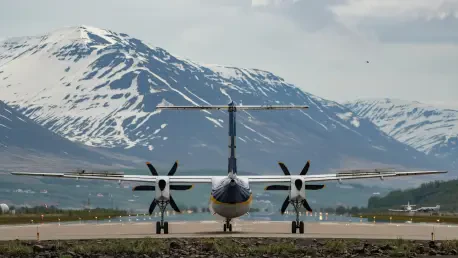As the winter chill settles over the Baltic region, Riga Airport (RIX) emerges as a bustling hub, connecting travelers to over 70 destinations across 35 countries during the current winter season, raising a compelling question about its impact. This impressive network, spanning business centers and leisure escapes, prompts us to explore how this expansion reshapes travel in the Baltics and what industry voices think about its significance. This roundup dives into diverse perspectives from aviation analysts, travel experts, and regional stakeholders to unpack the importance of Riga Airport’s ambitious winter schedule. The aim is to explore varying opinions on connectivity, strategic growth, and the balance between business and leisure travel, providing a comprehensive view of this pivotal development.
Diverse Perspectives on Riga Airport’s Winter Expansion
New Airlines and Connectivity Boost
Aviation analysts have noted the strategic importance of new carriers joining Riga Airport’s roster, particularly FlyDubai with its thrice-weekly service to Dubai and the return of Scandinavian Airlines (SAS) with planned flights to Copenhagen. Many in the industry view this as a game-changer for long-haul access, especially to the Middle East and Northern Europe. The consensus among experts is that these additions enhance Riga’s status as a critical junction, opening doors for travelers seeking far-flung destinations without sacrificing convenience.
However, not all opinions align perfectly. Some regional commentators caution that integrating new airlines into an already active hub poses logistical challenges, such as slot availability and passenger flow management. There’s a shared concern that prioritizing long-haul routes might strain resources needed for maintaining robust regional connections, which are vital for local economies. This tension highlights a broader debate on how airports like Riga can juggle global ambitions with local needs.
A third perspective comes from travel planners who applaud the increased options but urge caution about over-reliance on new entrants. They point out that consistent service quality and reliability remain paramount for passengers, especially during the unpredictable winter months. Their advice to travelers is to monitor flight schedules closely and plan for potential disruptions, while airports must ensure seamless integration of these new services into existing operations.
AirBaltic’s Role in Route Growth
Turning to Riga’s home carrier, airBaltic, industry observers have largely praised its bold expansion with new destinations like Faro, Porto, and Pisa, alongside increased frequencies to hubs such as Helsinki and Amsterdam. Many see this as a confident step toward solidifying airBaltic’s dominance in the Baltic market, with travel experts highlighting how these routes cater to a mix of corporate and vacation travelers. The enhanced schedules are often cited as evidence of a tailored approach to meet diverse demands.
On the flip side, some market analysts express reservations about the risks of overexpansion in a highly competitive sector. They argue that spreading resources across numerous new routes could dilute service quality if demand doesn’t match expectations. This viewpoint emphasizes the need for careful monitoring of passenger numbers and market trends to avoid financial strain on the airline, which could ripple back to the airport’s overall performance.
A contrasting opinion from tourism boards in the region focuses on the positive ripple effects of airBaltic’s growth. Representatives note that destinations like Tel Aviv and leisure spots such as Hurghada benefit from increased visibility, potentially boosting local economies. Their perspective underscores an opportunity for collaborative marketing efforts between the airline and destination authorities to maximize the impact of these expanded connections.
Legacy Carriers as Pillars of Stability
Major airlines like Lufthansa, Finnair, and LOT Polish Airlines continue to anchor Riga Airport’s network with steady schedules to key European hubs like Frankfurt and Helsinki. Aviation consultants frequently commend these legacy carriers for providing reliability, which is especially critical for business travelers who prioritize punctuality. Their sustained presence is seen as a backbone that balances the influx of low-cost and new carriers.
Meanwhile, some budget travel advocates argue that the spotlight often shifts too heavily toward legacy airlines, overshadowing the contributions of low-cost giants like Ryanair and Norwegian. With increased capacity on routes to Dublin and London, these carriers address a growing demand for affordable travel, a point often raised by cost-conscious consumer groups. This viewpoint challenges the notion that stability trumps accessibility in shaping travel trends.
A different angle comes from frequent flyers who value the interplay between legacy and low-cost options. Many express appreciation for the consistent service of established airlines while welcoming the competitive pricing introduced by budget carriers. This blend, they argue, creates a dynamic environment at Riga Airport, catering to a wide spectrum of traveler needs and fostering a more inclusive travel ecosystem during the winter season.
Balancing Business and Leisure Demands
The strategic mix of business and leisure destinations in Riga Airport’s winter lineup has sparked varied reactions among stakeholders. Corporate travel specialists highlight the importance of frequent connections to cities like Amsterdam and Warsaw, which support the Baltic region’s growing business ties. They often describe Riga as a vital link for professionals navigating European markets, with the airport’s network reflecting a keen understanding of economic priorities.
In contrast, leisure travel promoters emphasize the appeal of sunny escapes to places like Malaga and Sharm El Sheikh, which cater to winter-weary travelers seeking warmth. Their perspective often centers on how such diversity in offerings positions Riga as a versatile hub, capable of rivaling larger European airports. Some even suggest that other Baltic airports could draw inspiration from this model to enhance their own seasonal strategies.
A more cautious outlook emerges from economic analysts who question the sustainability of this dual focus amid geopolitical and financial uncertainties. Fluctuations in travel patterns, driven by external factors, could disrupt the delicate balance between business and leisure routes. This group often advocates for contingency planning and data-driven adjustments to ensure long-term viability, urging airport authorities to remain agile in response to global shifts.
Key Takeaways from the Roundup
Reflecting on the insights gathered, it becomes clear that Riga Airport’s winter season, with over 70 destinations, has sparked a rich dialogue among industry voices. The addition of airlines like FlyDubai and SAS, coupled with airBaltic’s expansive routes, earned widespread recognition for boosting connectivity. Legacy carriers provided a foundation of reliability, while the blend of business and leisure options showcased strategic foresight, though concerns about overexpansion and sustainability lingered in discussions.
For travelers and stakeholders looking to build on these developments, actionable steps emerged from the discourse. Exploring new destinations like Dubai or leveraging frequent flights to European hubs for business can maximize the current offerings. Industry players might consider investing in data analytics to predict demand trends and refine route planning. For deeper insights, delving into regional aviation reports or engaging with Baltic travel forums can provide additional context on how Riga’s strategies might evolve in the coming years.









